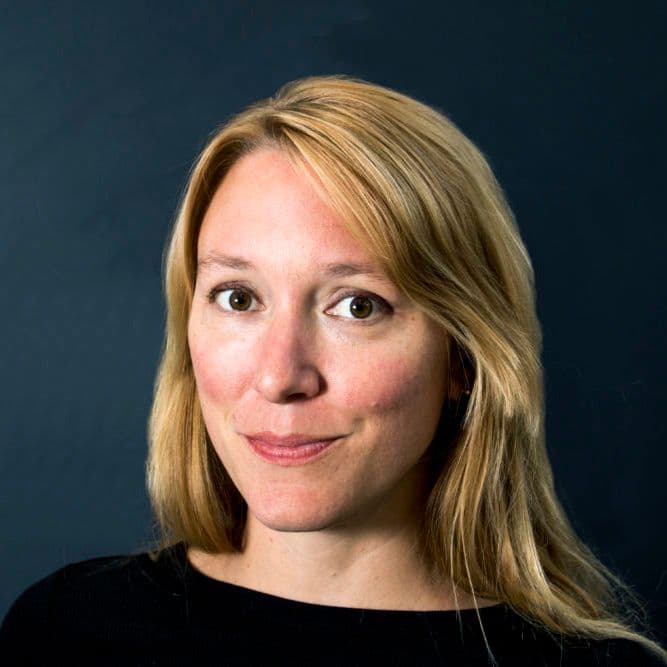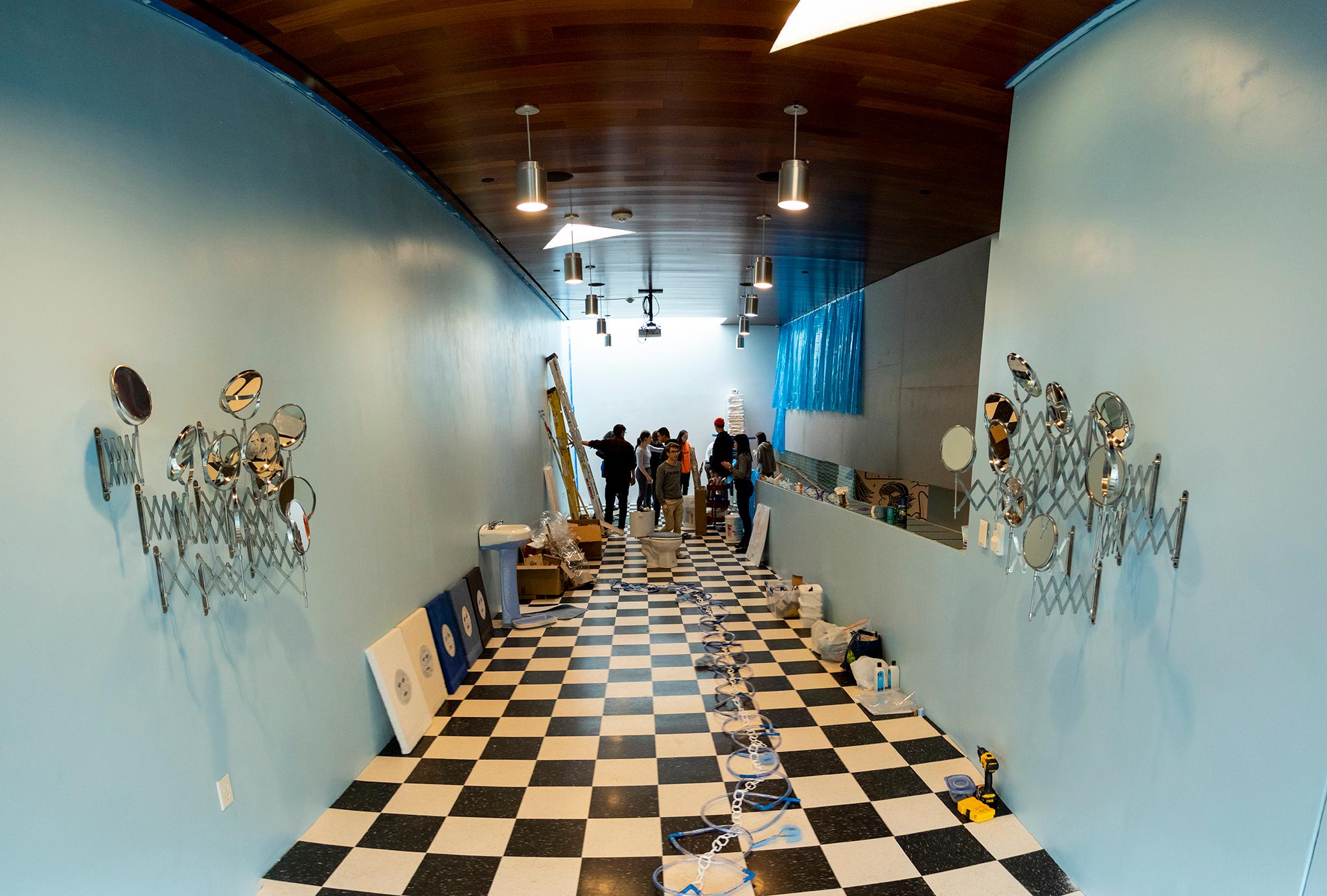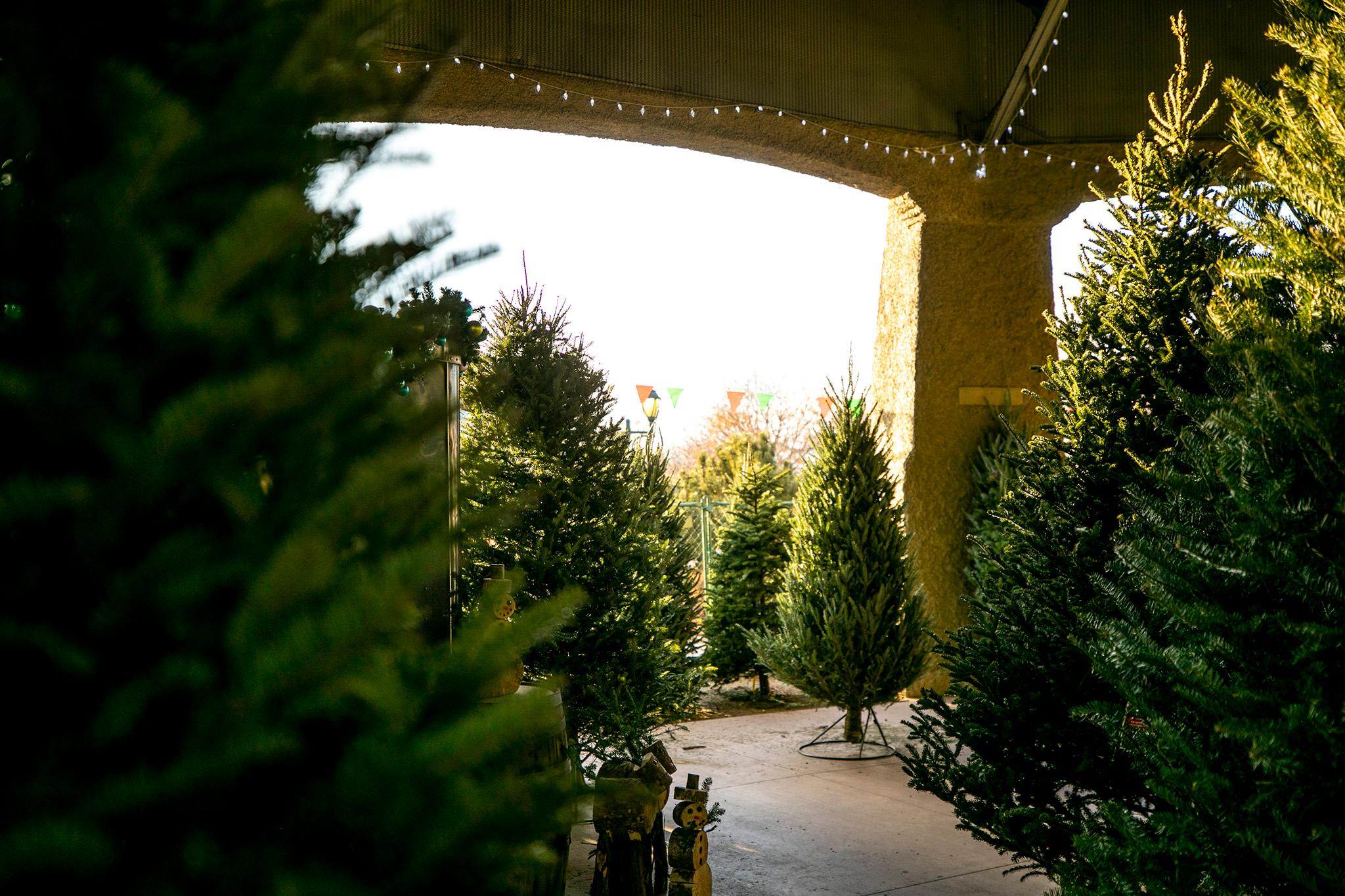Climb to MCA Denver's highest reaches right now and you'll find yourself in a bathroom, sort of.
Up the ramp and past the actual restroom, a group of teenagers in the Failure Lab program has installed an art bathroom in the long third-floor space the museum reserves for this purpose. The effect is something like what a bathroom might look like a surrealist painting -- one you can walk around in. It was dreamed up, designed and built by the 14 metro-Denver teens participating in the school-year-long program.
"They centered the theme around a bathroom to explore ideas of purity, around cleanliness, around rituals," said Molly Nuanes, Failure Lab's lead instructor and a programs manager for MCA Denver. "I found it really funny in a silly way that they pick this intimate idea in a giant space."
The group, which is selected through an application and interview process that starts in March and ends in August, meets for two hours every Wednesday at the downtown Denver museum. This particular group was chosen from more than 100 applicants -- a record high -- and is larger than the usual cohort by two. Students can participate for up to two years, and with several returning for their second go-around this year, Nuanes didn't want to limit open spaces. They get paid up to $300, based on attendance.
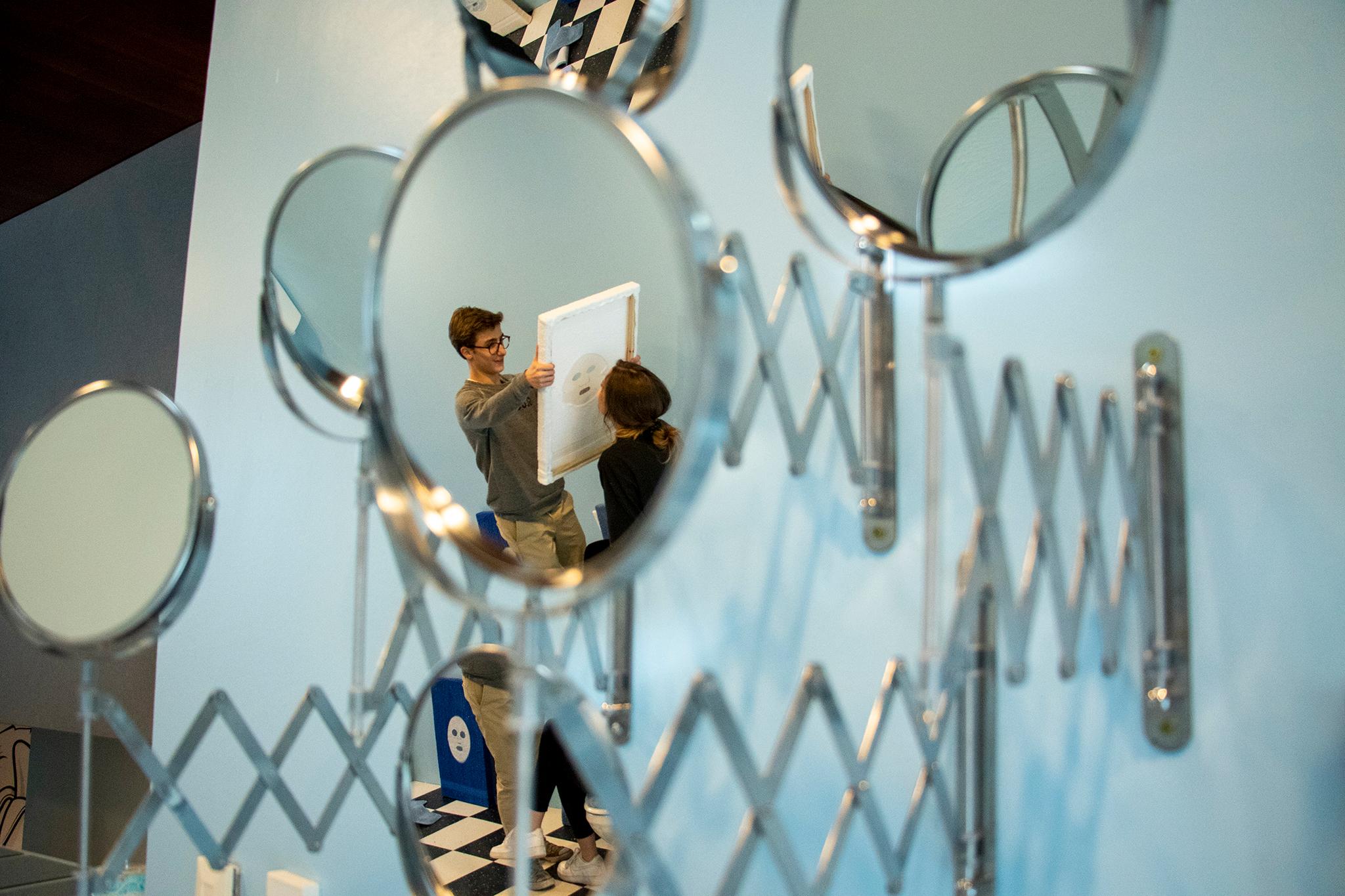
This is Failure Lab's sixth year of bringing teens in to work directly with local artists, visit galleries, explore studio spaces, craft their own ideas and build exhibits. In the fall, they put on the annual teen art show, for which the kids write the call to entry, distribute the submission forms across the metro area, jury the show, frame the art and hang the art. Then they throw a big opening party, and the exhibition stays up for two to three months. In the spring, what they're working on now, they're working with a specific local artist, in that artist's milieu, to create another exhibit.
This year it's Marsha Mack, who does ceramics and conceptual, installation-based works.
Before they got to work installing the exhibit at their regular Wednesday evening meeting, the Failure Lab group ran through some scheduling notes and announcements. It was May 1, college decision day, someone pointed out. The seniors in the group shared their picks -- one of them is off to the Art Institute of Chicago. Another student shared that she had an art show opening soon, another that he won a debate competition.
With time spent in the museum ramping up and the opening night just days away, there was one concern about scheduling: Prom is coming up, and some of them are going to be out very late.
The day before, a different group of teenagers sat in the same room -- the one with a wall that looks like a tattoo artist's tearsheet -- with a sign that says "CLOSED FOR TEEN STUFF" posted at the door. The group of nine (15 when they're all in attendance) was there for the semester-long Point of View program, or POV, in which they make their own zine. They also get paid up to $300.
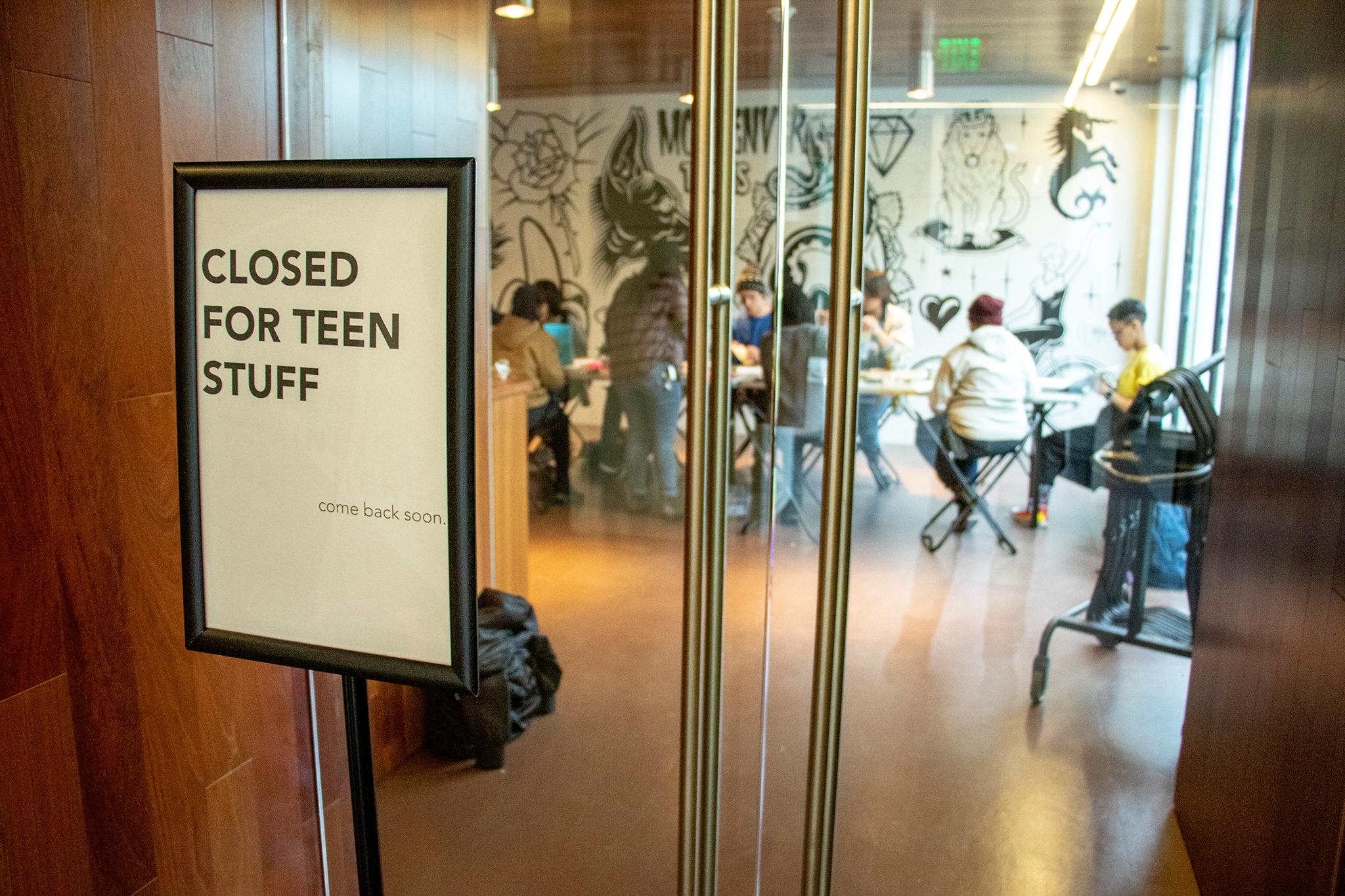
At this meeting, they were learning how to bind a zine. Construction paper, bone folders, needles and thread at hand, they went through the steps with Denver artist Heather Link Bergman.
It's a loose environment. At one point Bergman pointed out that one of the students was doing it wrong.
"To be honest I didn't listen to any of the instructions," he replied, smiling at the laughs from Bergman and his peers.
A few moments later, Bergman warned the group, "OK, it's going to get a little crazy now."
Someone yelled back, "It's already crazy!"
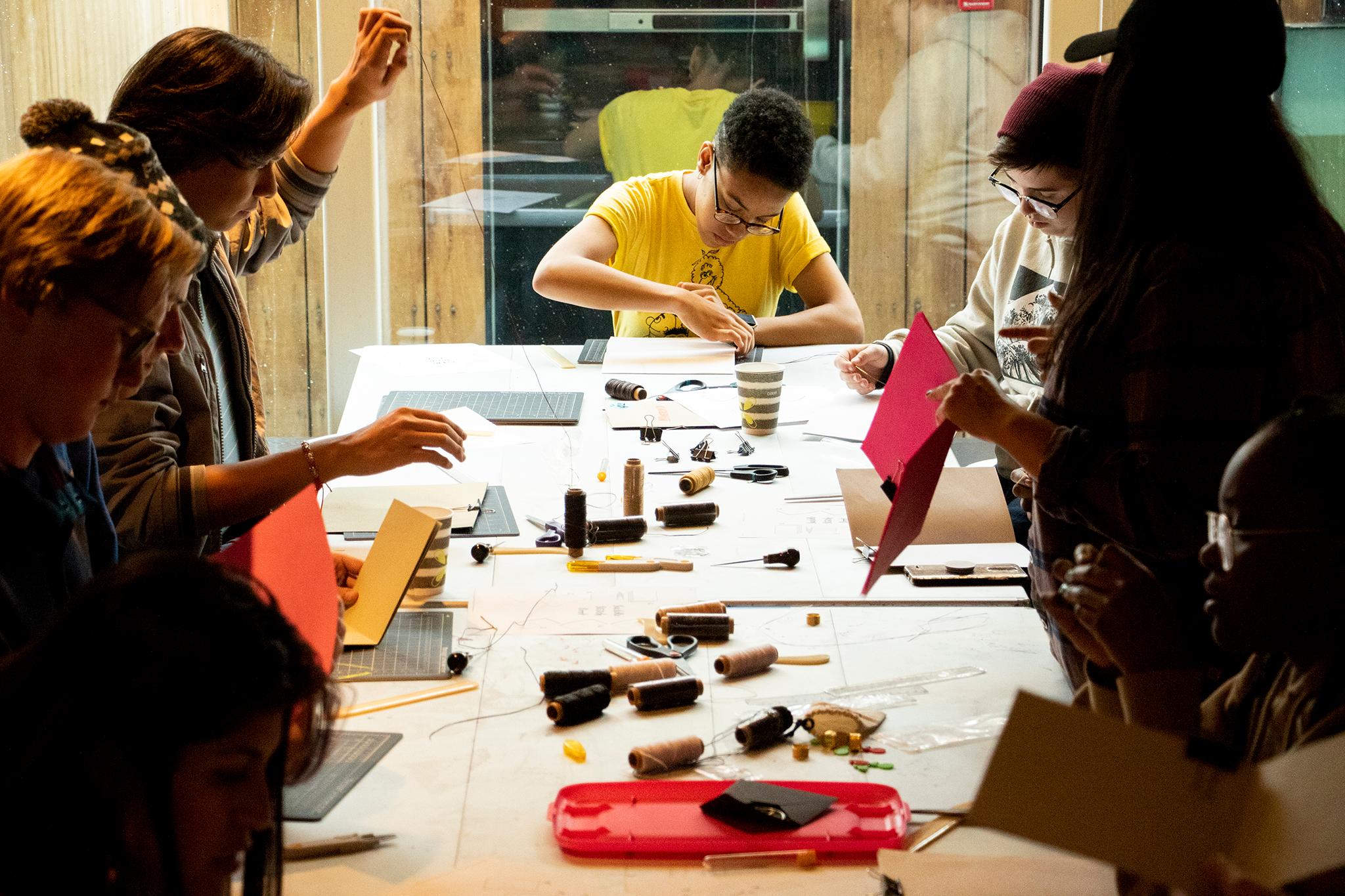
Each of the teenagers in the POV program contributes something different to their zine. Eliazah Dixon, a 14-year-old student at Rangeview High School, wrote a few poems about body image and eating disorders, each accompanied by a photo of herself that she felt "portrayed the poem."
Nina Paul, a 16-year-old student at Jefferson Academy, ended up with two pages to contribute. The first, a collection of sticky notes typed over with hurtful things her father has said and done.
"I think by doing this, it kind of gives people a little insight into how mental abuse is actually -- how much it affects a kid even. Because I'm a kid."
The second page is a poem about what the emotional abuse did to her and how "it affected me in the past but it doesn't affect me now."
Being part of POV has been valuable in that way, as an emotional exercise, but also as a creative outlet and a place where she's among people like her.
"[I learned] there's a lot more people who think artistically, and that's amazing because in my high school I'm like one of... one," Nina said.

And while POV is a place for creative kids to be together and work together, artistic ability is not a requirement.
"Having any sort of artistic skill set or having any sort of skill level or background as an artist is not a prerequisite for our programs," said Alex Jimenez, lead instructor for POV and an MCA program manager. "We are looking for just people who are really excited by contemporary art and ideas and who can appreciate them. So if you are also an athlete and you do all these other things, and you've never picked up any sort of art medium, that's fine."
The same goes for Failure Lab.
"It's not necessarily about coming away with hard art skills," Nuanes said. "We're not trying to train students to be oil painters or sculptors or anything like that. It's more about diving into the creative process. So none of our students, to that point, are required to be artists or identify as an artist. We just ask that they appreciate contemporary art, appreciate creative culture and sort of live in that realm."
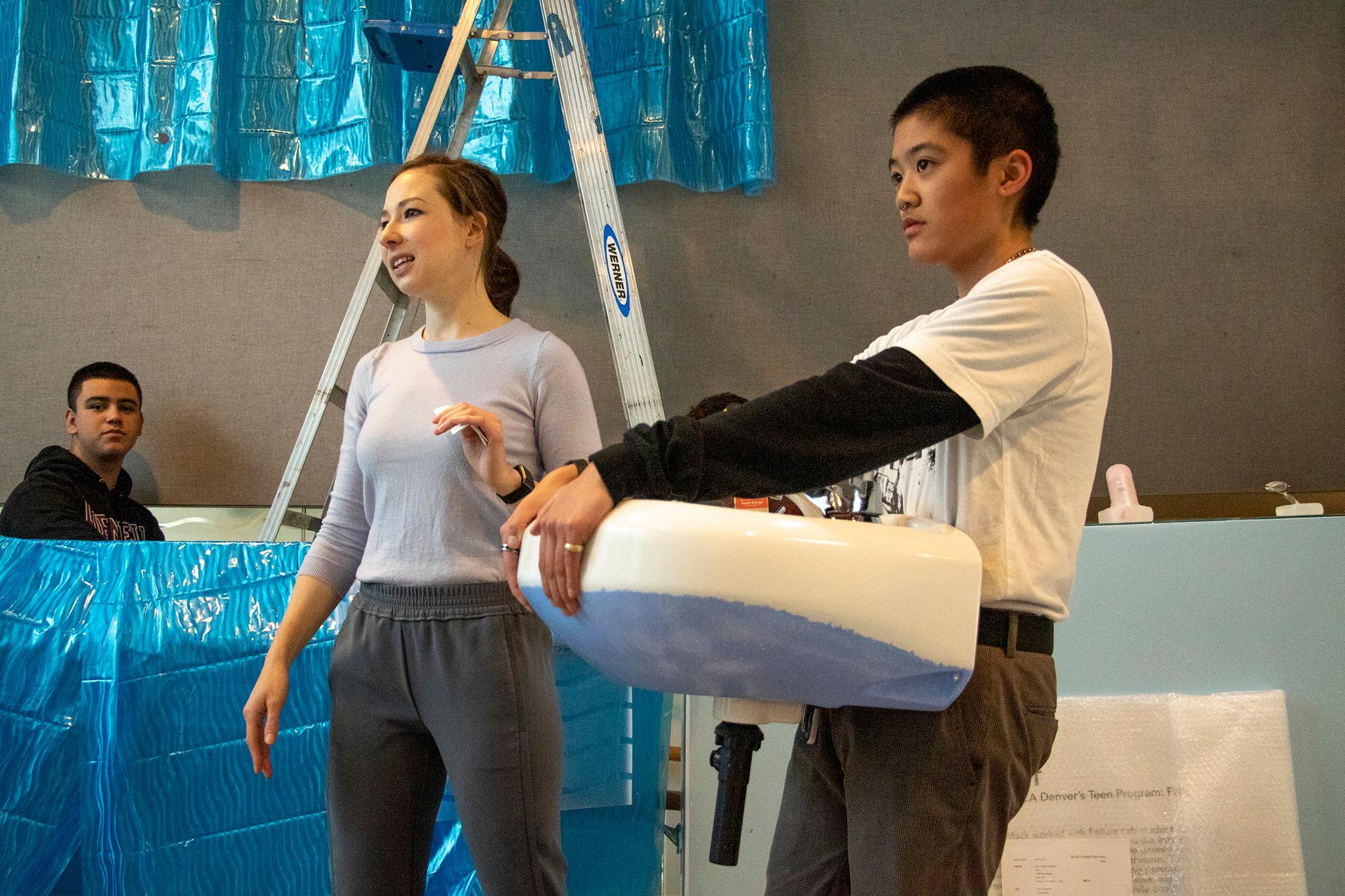
The tangible results are very different, but the goals are also very much the same. The programs are about letting kids experiment, break rules, fail before they succeed and work with other kids like themselves who they wouldn't otherwise meet.
"We came up with the name Failure Lab because it plays into two of the big ideas we like to focus on in this program," Nuanes said. "One is that we really want to make this a place where students feel like they can take creative risks. They don't get to do that at school. ... Here, we want to open it up so they get to take risks and play with different materials and try things. It's OK if things don't work out. We want to really imbue that as sort of a lifelong practice and habit."
POV, Jimenez said, is "very loose."
"There's not a tight curriculum with this. It's not a step-by-step of how to create a zine. ... One of the big goals is that we want to kind of guide creative, interesting youth through a creative process. We want to foster their curiosity and help them go down those weird tangents and explore maybe those projects that have been in the back of their head."
Failure Lab and POV are backed by one of Denver's biggest art institutions, crafted by artists and guided by thoughtful goals and planning, but in the end, this is teen programming. Not that teenagers don't value those things -- because these kids do -- but sometimes it just comes down to the programs being cool.
"It was like 3 in the morning and I was scrolling through Instagram and there was an ad for this and I was like, 'Oh that sounds cool,' so I signed up," Eliazah said before last week's POV meeting began. Asked what she'd learned, she said: "Just going for it. Like, I had no clue what I was doing. But it was an idea I had and it worked."
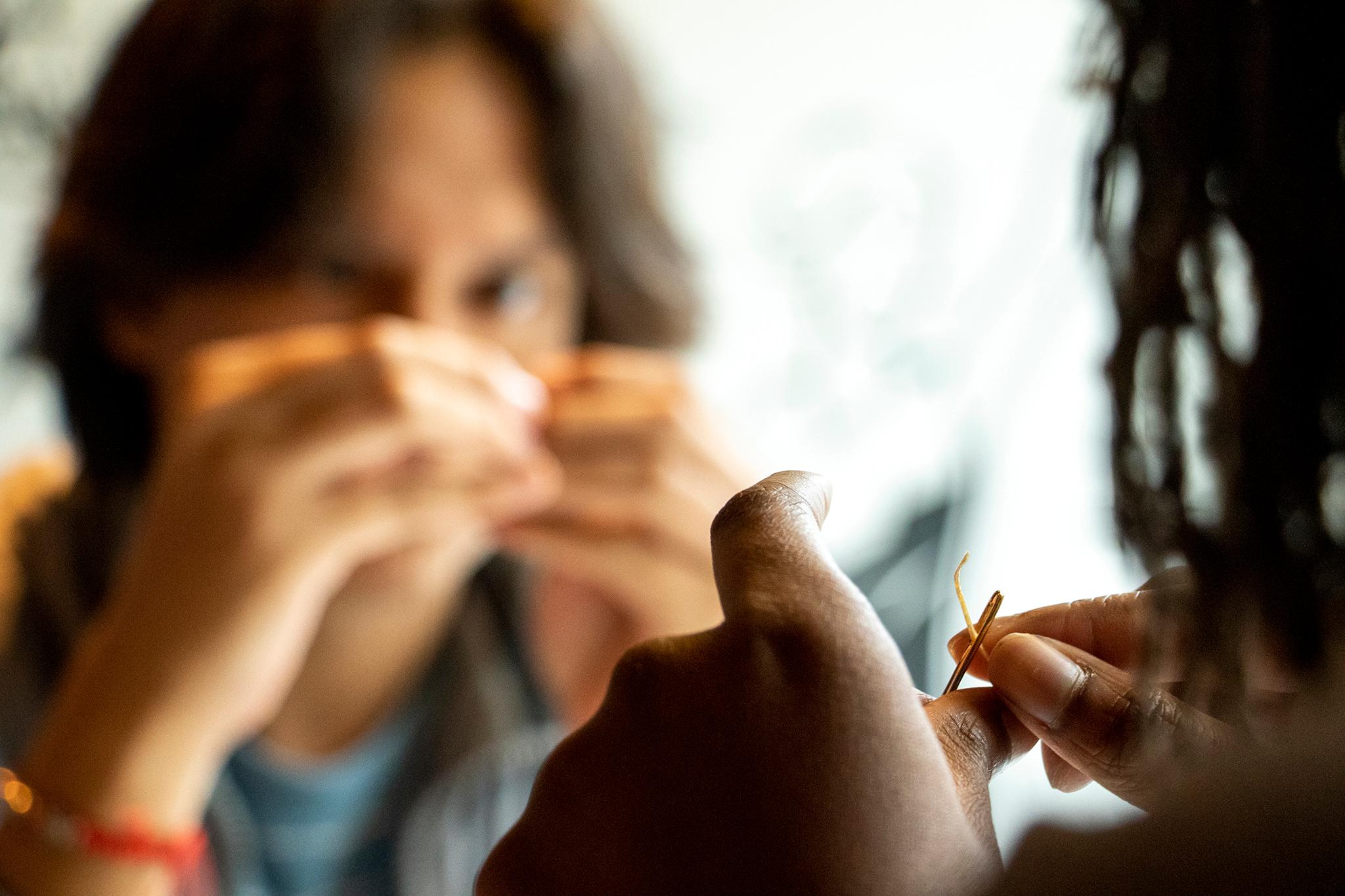
You can see the Failure Lab exhibit now at MCA Denver, 1485 Delgany St. Hours are noon to 7 p.m. Tuesday through Thursday, noon to 9 p.m. Friday, and 10 a.m. to 5 p.m. Saturday and Sunday. Admission is free for everyone 18 and younger.
Failure Lab applications for next year are still open, through 11:59 p.m. May 10.
POV's zine release party is from 6 to 9 p.m. May 10 at MCA Denver. Admission and a copy of the zine are free.
